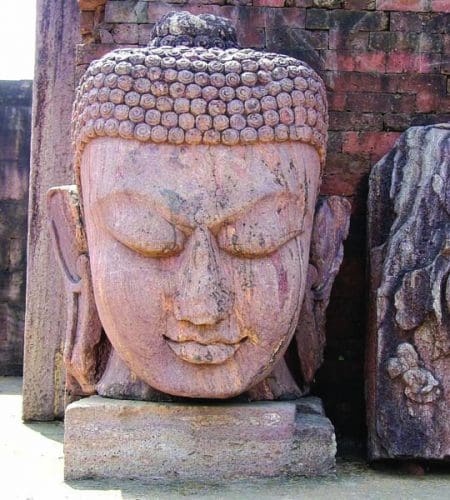
The Buddhist Circuit in Odisha, comprising Dhauligiri, Ratnagiri and Lalitgiri, provide a rich concentration of Buddhist heritage and culture for destination explorers to discover their mysterious charm
Buddhism, with its unique message of egalitarianism and constant emphasis on humanity, influenced numerous civilizations while giving birth to several newer ones.
In Odisha, Buddhism is known to have existed since its inception, even though Lord Buddha never actually visited it during his lifetime. Buddhist chronicles refer to Buddha’s KesaAsthi (hair relic) brought to Odisha, then known as “Odra,” by two rich traders – Tapassu and Bhallika.
The Chinese monk, scholar and traveller, Hiuen Tsang, visited Odisha in the 7th century, and he vividly described the flourishing state of Buddhism in Odra. The influence and impact of Buddhism in Odisha continued until the 15th century.
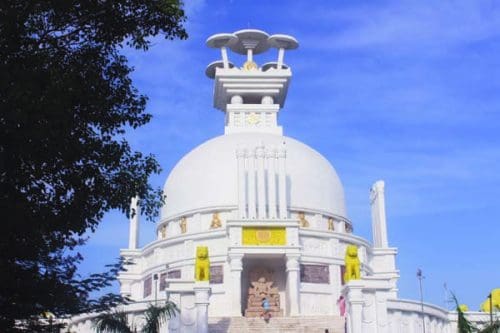
Indeed, the numerous stupas, images and viharas (monasteries) scattered across the land stand as a testimony to this glorious heritage.
Buddhist tourism in Odisha has always been popular; however, with recent findings from several excavations, the entire sector has received a tremendous boost. The Buddhist Circuit, comprising Dhauligiri, Ratnagiri and Lalitgiri, showcases some of the most notable Buddhist sites and boasts a rich concentration of Buddhism heritage.
The vagaries of time have not snatched their glories in any way, nor has the mysterious enchantment surrounding them faded away.
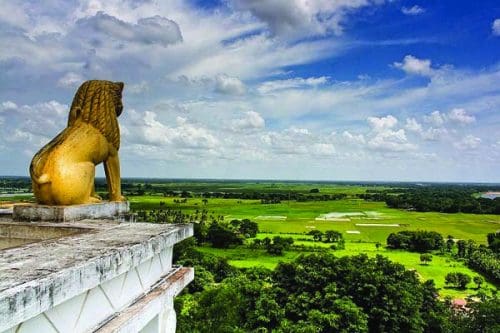
DHAULIGIRI
The rock outcropping on Dhauli Hill on the banks of the River Daya is the site of a set of rock edicts left by the Indian Emperor Ashoka, around 260BC.
The Odishan edicts that are found here, including two special edicts, are essentially public injunctions to the empire’s administrators in the area, enjoining them to rule with justice and gentleness.
The elephant which emerges from the rock above the inscriptions were probably meant to draw attention to the edict, besides serving as a symbol.
The serenity enveloping this place, combined with the legacy of Buddhism, motivated the Kalinga Nippon BuddhaSangha, under the guidance of GurujiFujii, Founder President of NipponzanMyohoji of Japan, to erect a Peace Pagoda, also called Shanti Stupa, besides the construction of a monastery called SaddharmaVihar, in the early part of the 19th century.
HOW TO REACH DHAULIGIRI
Air: Bhubaneswar is the nearest airport, well connected to the major cities of India.
Rail: Bhubaneswar is a major station near Dhauli and well connected to the railway network of India.
Road: Dhauli can be reached by either by bus or rented taxi.
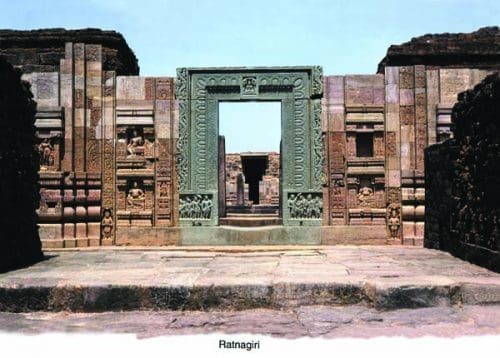
RATNAGIRI
Ratnagiri, located in the Birupa river valley, in Jaipur district, is another famous Buddhist centre. A small hill situated near the village bearing the same name consists of rich Buddhist antiquities.
A large excavation led to the discovery of two large monasteries, a big stupa, Buddhist shrines, various sculptures and a large number of votive stupas.
The excavation also revealed the establishment of a Buddhist centre dating back to the time of the Gupta king, Baladitya (first half of the 6th century AD). The Mahayana form of Buddhism is said to have flourished here since ancient times, and in the 8th-9th century AD, it became a great centre of Tantric Buddhism or Vajrayana art and philosophy.
Today, this university of Buddhist learning, lies in ruins, though it still reflects its former glory, and attracts a huge number of visitors year-round. Lovers of art and architecture will find much to marvel at here as Ratnagiri offers in its magnificent ruins – a large brick monastery with beautiful doorways and sanctum with a colossal Buddha figure, and a large number of Buddhist sculptures.
HOW TO REACH RATNAGIRI
Air: Bhubaneswar is the nearest airport, connected to most major cities in India.
Rail: Cuttack is the best railway station within easy reach, at a distance of 70 km from Ratnagiri and well connected with major stations across India.
Road: There are good roads from Cuttack and direct buses run between the two places.
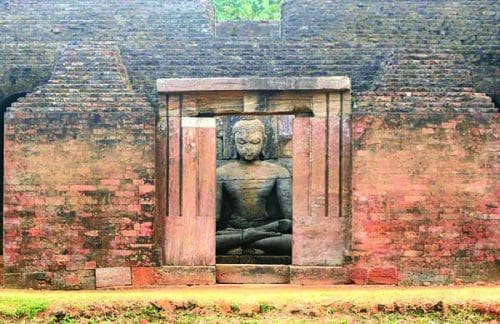
LALITGIRI
Lalitgiri is the earliest Buddhist complex dating back to the 1stcentury AD. Recent excavations carried out here have unearthed several archaeological materials that makes Lalitgiri a great centre of Buddhist attraction.
The rural landscape is surrounded by the ruins of a huge brick monastery, the remains of the Chaitya hall, a number of votive stupas and a renovated stone stupa – the apex of a small rugged sandstone hill.
The museum displays a large number of Mahayana sculptures consisting of enormous Buddha figures, huge Boddhisattva statues, amongst others.
The Standing Buddha figures, with knee-length draperies and over the shoulders remind one of the influences of the Mathura and Gandhara school of art.
What enhances the sacredness of the stupa, as well as the entire region of Lalitgiri, is the discovery of caskets containing sacred relics that some attribute to Tathagata, from the stone stupa at the top of the hill. Famous Chinese pilgrim Huien Tsang, who visited Odisha in 639 CE, found more than a hundred Buddhist monasteries which he elaborately mentioned in his travelogueSie-yu-kie.
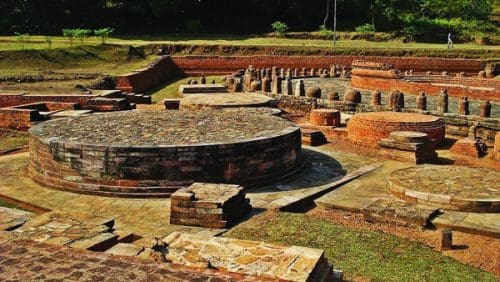
HOW TO REACH LALITGIRI
Air: Bhubaneswar is the nearest airport. Well connected toLalitgiri by road.
Rail: Bhubaneswar is the nearest railhead, well connected tomajor cities through broad gauge network.
Road: Lalitgiri is well connected with Bhubaneswar and other cities through a good road network.
Read More: Discover Your India



